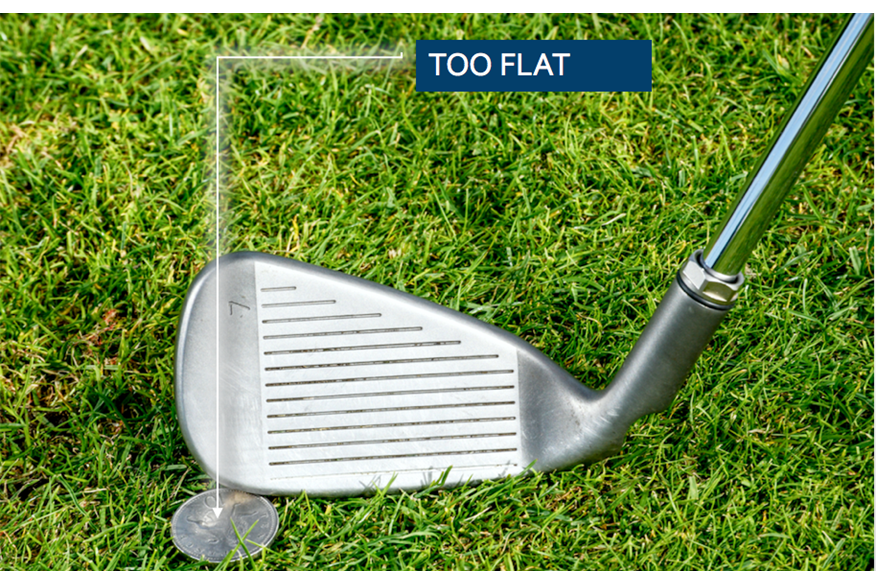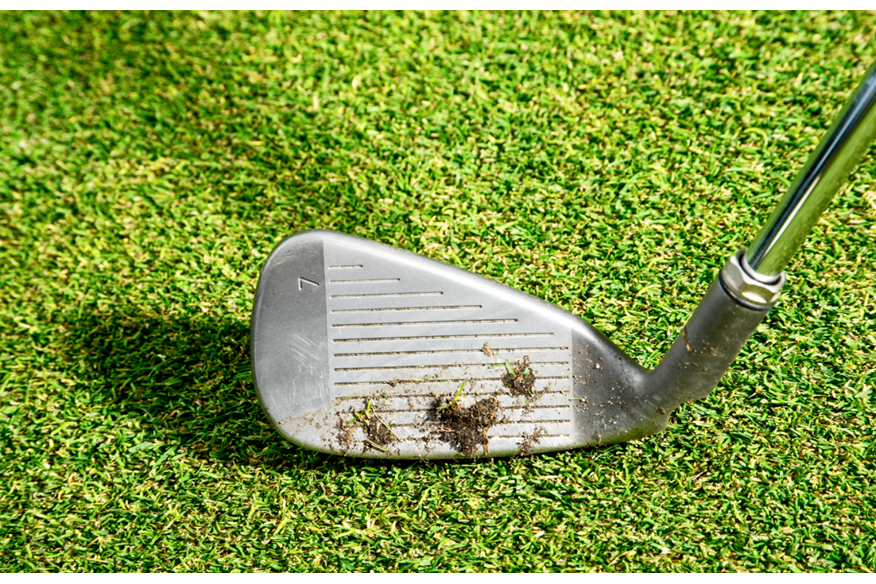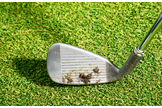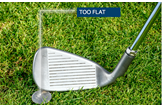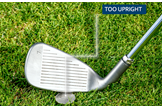Do you need to fix your lie angles?
Published:
Is your gear revealing that your lie angles are off? Here’s how to tell…
Check the faces of your irons after taking a divot. What is the pattern of mud and dirt on the face? Ideally it will leave a fairly level “tide mark”. But if the mark left is more diagonal – like the low-toe-to-high-heel mark shown here (above) – you may well be using clubs that are the wrong lie angle for you.
What is lie angle?
Picture the angle between the sole of a golf club and its shaft. This is basically what’s meant by lie angle. Golf clubs can be built with this angle flatter, to accommodate shorter people, or more upright, to suit taller folk. It’s vitally important the lie angle of your irons fits your build because it allows the sole to strike the ground in a stable and square position.
➤ Low-toe-high-heel marks suggest a lie angle that’s too upright for you. Similar to when the ball is above your feet, this tends to put the face into a closed position. Expect pulls and hooks.
➤ High-toe-low-heel marks crop up when your lie angles are too flat. Just as with ball-below-feet, this typically opens the face promoting cuts and slices.
Is your club lie angle too upright?
Take your regular address position. If there’s room to push the coin under the centre of the face, the club is too upright.
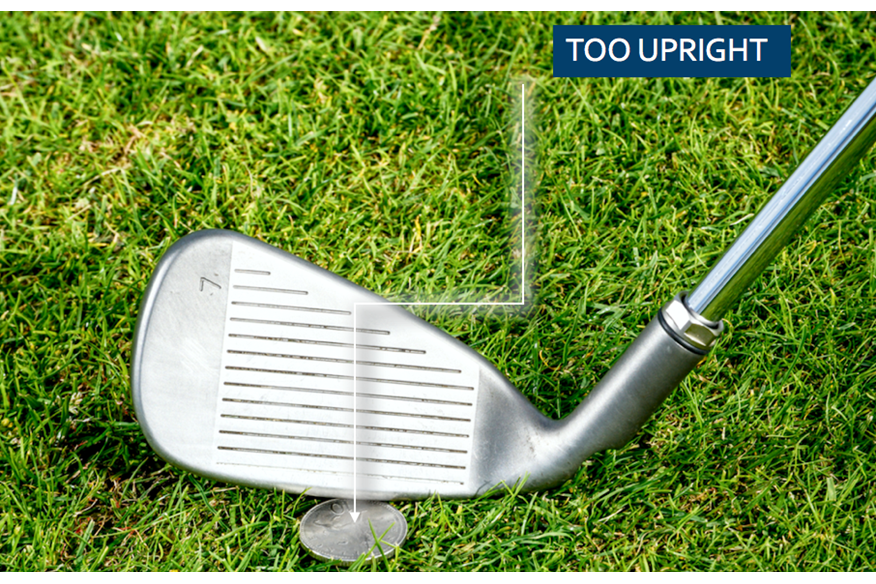
Is your club lie angle too flat?
If there is no room at all to push the coin under the sole, the lie angle of the club is too flat. Ideally the coin will slide around a third of the way under the sole.
